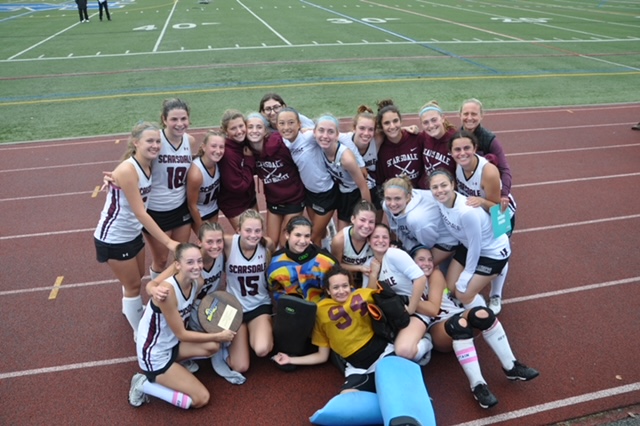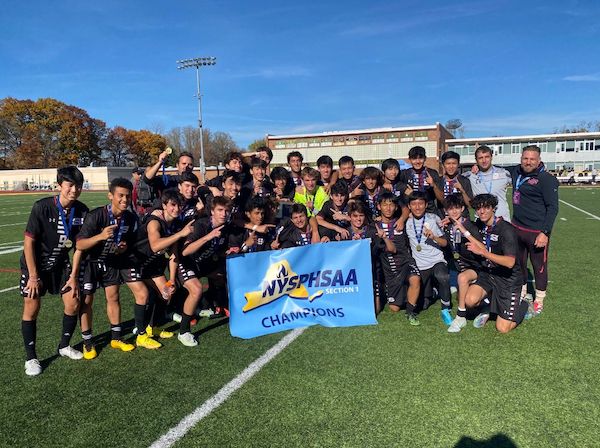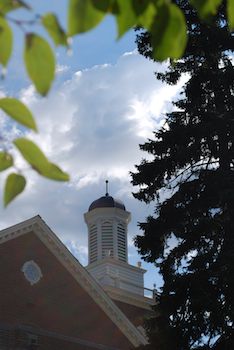SHS Field Hockey Team Defeats Bethlehem and Wins Regional Title
- Details
- Written by: Joanne Wallenstein
- Hits: 1873

Residents Call for the Inclusion of Asian Holidays in the School Calendar
- Details
- Written by: Joanne Wallenstein
- Hits: 2740
 Following two comments at the prior Board of Education meeting requesting that Diwali be made an official school holiday, two residents spoke at the October 26, 2022 Scarsdale Board of Education meeting to request that the Lunar New Year and Eid also be added as school holidays.
Following two comments at the prior Board of Education meeting requesting that Diwali be made an official school holiday, two residents spoke at the October 26, 2022 Scarsdale Board of Education meeting to request that the Lunar New Year and Eid also be added as school holidays.
See comments below from freshman Charlene Dong and resident Laura Liu on the addition of Asian holidays to the school calendar.
Charlene Dong
My name is Charlene Dong. I am a freshman in Scarsdale High School and I live at 5 Gilmore Court.
I am speaking today to ask the board to consider adding Lunar New Year to the Scarsdale School Calendar. As you may know, Lunar New Year is the most important holiday in many Asian cultures. It’s a celebration that lasts 15 days, with traditions and rituals throughout.
I was born and raised in New York but my parents are both immigrants from China. So Lunar New Year has always been part of my culture. From a very young age, my parents would tell me about all the traditions and rituals. For example, everybody stays up on New Year’s eve and waits for the countdown of the New Year; on the first day of New Year, people go visit families and friends and kids get red envelopes. But each time, they would finish by saying, “too bad you have school and we can’t do that.” After hearing our complaints, one year, my parents decided to pull me and my brother out of school on the first day of Lunar New Year. But instead of having fun and celebrating, for the whole day, my mind was on the schoolwork I had to make up for. I was worried that I might have missed something important in class that I would get tested on later. I just wished it was a true day off and I can fully enjoy being with my family and not thinking about schoolwork constantly.
I have lived in Scarsdale for 7 years and truly love our diverse community. To be honest, I never heard of Yom Kipur and Rosh Hashanah before I moved to Scarsdale. But after seeing them on the school calendar, I got curious and Googled these holidays. That way, I learned a little bit about the Jewish culture. In the past few years, Scarsdale has seen a big increase in Asian families. I implore the board to seriously consider adding Lunar New Year to the school calendar. That way, for those who celebrate the holiday, the kids can truly enjoy that day. For those who don’t celebrate, they have an opportunity to appreciate other culture as well.
Laura Liu, Wheelock Road
I'm speaking here as a member of the community only. I'd like to thank the Board and the Administration for your great work and dedication, special thanks go to Dr. McIntosh for the very informative education report. I also thank the Board for rescheduling this meeting so residents who celebrate Diwali wouldn't have to miss this important meeting.
I'd like to express my support for the proposal raised by many students and residents to add the Asian holidays to the school calendar, including Samina Malik who spoke at the board meeting on 10/3, and Charlene Dong who spoke earlier this evening. While adding Eid and Lunar New Year has been specifically proposed, I'd like to suggest that the district add Diwali to the list, and give the issue of Asian holidays the serious considerations it merits as you start to work on the 2023-2024 school calendar. I recognize that these changes are very significant and carry many operational challenges. These changes may also feel like departures from tradition and old habits and may cause some discomforts. But I believe that our school community as a whole is at the point where we are ready to engage in this work as a real project. It should no longer just be a concept or a wish for down the road. I hope the Board will set specific goals and timelines, start to engage in scenario analysis, identify steps to resolve barriers and work toward making Asian holidays in the district a reality. This progress will substantially advance the DEI work we invest heavily in. It will greatly add to the congruence of many of the district's strategic goals including student centered education, cohesive community and global citizenship. While the process of change will take some work, the long term benefits will be too significant for us to delay this work.
Whether it's in our schools, on the sports fields, in the town library, in Boy Scouts and Girl Scouts, local music and arts events, or many other civic settings, we see a very large number of families of Asian descent actively contributing to our community, and that number is growing annually. This past Saturday I joined some friends at a Diwali celebration in Ardsley. The beautiful music, dance, food and shared culture really brought home for me the strength of our shared community, of how much we all value and enjoy the same things. I hope the Board will work toward adding the Asian holidays to the school calendar and truly affirm the diverse, multicultural community that we already are.
Undefeated Boys Soccer Team Wins First Playoff Game Vs. Clarkstown South
- Details
- Written by: Hadley Schwall
- Hits: 1731

The team's first goal of the match was scored by Henry Rifkin. His teammates, impressed, said he was the most improved on the team. His contributions from spanning throw-ins and being consistently positive and verbal with the team have truly made an impact.
At the end of first half Clarkstown South’s goalie got called for a handball. In frustration, he threw the ball in the direction of the referee which earned him a red card. By halftime, the ders were still up 1-0.
The start of the second half brought about trouble. Down a man, Clarkstown South still managed to score and brought the game to a tie. But, like they always do, the raiders redirected that threatening energy to secure the win. Lorenzo Galeano was the next to score.
Lorenzo Galeano, starter winger, was back on the field Tuesday after a challenging medical leave. He had been out since the match against Mount Vernon on October 6th where he took a strange tackle and fall. Planning for a season ending surgery on his grade 5 separated shoulder, the team was already processing the loss of a key component to the lineup. But, after a second opinion, days before the surgery, it was called off and he was able to recover.
Before the buzzer deemed the team triumfant, Leo Khang added to the tally to end the game off 3-1. The ders’ next showdown will be versus John Jay, tonight, 10/27, at 5pm at the Scarsdale High School turf.
Photo credit Elliot Zhang.
Letter from the PT Council: Thank You to the Board of Education
- Details
- Written by: Joanne Wallenstein
- Hits: 1546
 To the Editor: This year, New York School Board recognition week is taking place from October 17-21. Each year, this week serves as a time to highlight the work of dedicated volunteer School Board members. Scarsdale PT Council would like to publicly recognize the incredible dedication and immense scope of volunteer service of the members of the Scarsdale Board of Education. These seven community members dedicate tremendous time and effort to maintain and enhance the education of our community’s children. They serve a significant role as fiscal stewards and advocates, in addition to engaging with and working alongside district administration, school groups and the broader community.
To the Editor: This year, New York School Board recognition week is taking place from October 17-21. Each year, this week serves as a time to highlight the work of dedicated volunteer School Board members. Scarsdale PT Council would like to publicly recognize the incredible dedication and immense scope of volunteer service of the members of the Scarsdale Board of Education. These seven community members dedicate tremendous time and effort to maintain and enhance the education of our community’s children. They serve a significant role as fiscal stewards and advocates, in addition to engaging with and working alongside district administration, school groups and the broader community.
PT Council would like to express its deep appreciation of our Board of Education members and their commitment to moving our remarkable school system forward. A donation has been made to the Scarsdale High School PTA Scholarship Fund in honor of the Board.
Sincerely,
The 2022-23 PT Council Executive Committee
Niche Ranks Scarsdale High School #13 in the State
- Details
- Written by: Joanne Wallenstein
- Hits: 3165
 According to a new poll from Niche, Scarsdale High School has been rated number 1 in the county and number 13 in the state.
According to a new poll from Niche, Scarsdale High School has been rated number 1 in the county and number 13 in the state.
According to Niche, "the Niche Best Public High Schools ranking is based on rigorous analysis of academic and student life data from the U.S. Department of Education along with test scores, college data, and ratings collected from millions of Niche users."
Their data shows that 99% of students graduate from high school, the average SAT score was 1400 and the average ACT score was 31.










